Mini Goldendoodle vs Goldendoodle: What’s the Difference?
Are you contemplating bringing a bundle of joy into your home but find yourself torn between a Goldendoodle and a Mini Goldendoodle?
Each brings a unique blend of the Golden Retriever’s friendly disposition and the Poodle’s hypoallergenic coat into one package. But when it comes to choosing between the standard and the mini, several factors come into play, including their size, energy levels, and the kind of care they require.
From delving into the intricate world of generational breeding to exploring the grooming and socialization needs of these poodle mixes, this article aims to equip you with all the knowledge you need to make an informed decision.
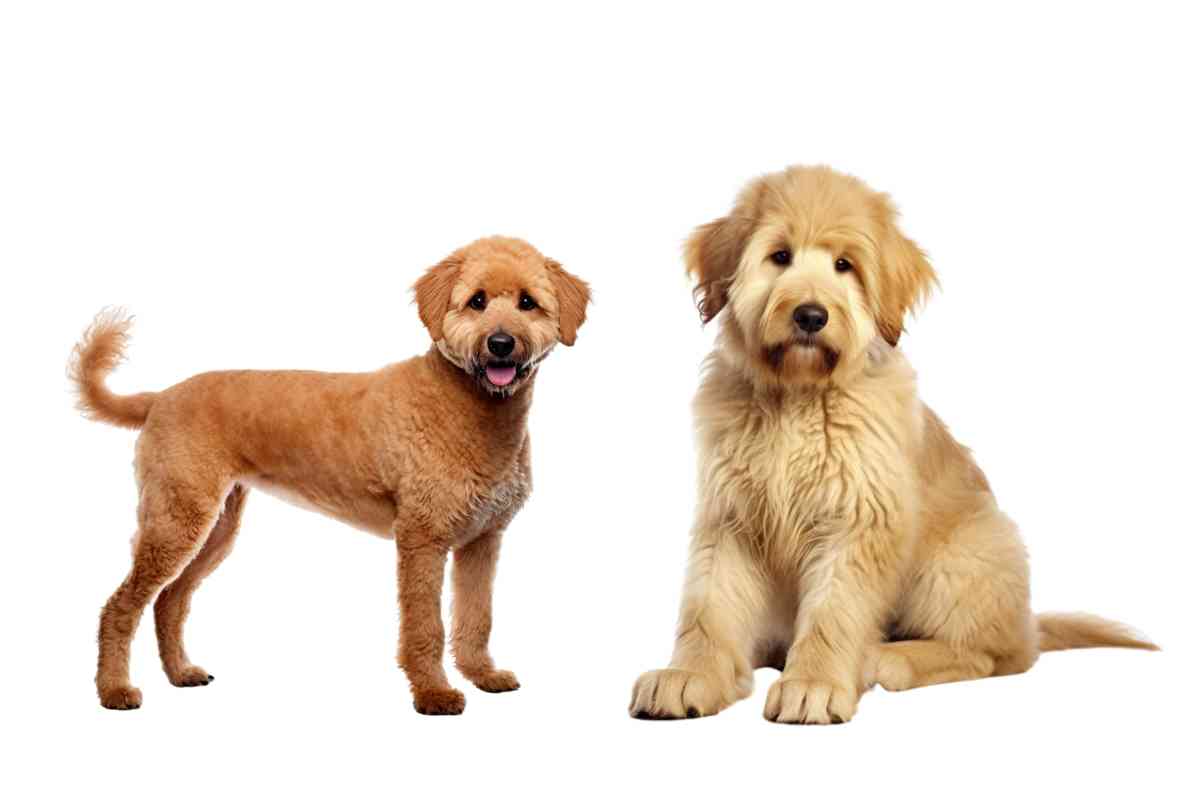
Mini Goldendoodle vs Goldendoodle: What’s the Difference?
Standard Goldendoodles are the largest of the breed, generally weighing between 50 and 90 pounds and standing about 20 to 24 inches tall at the shoulder. Mini Goldendoodles are notably smaller, usually weighing between 15 and 30 pounds and standing 13 to 20 inches tall at the shoulder. Goldendoodles are bred from a Standard Poodle and a Golden Retriever while Mini Goldendoodles are bred from a Miniature or Toy Poodle and a Golden Retriever.
Related articles:
- Cavapoo vs Mini Goldendoodle: Which is the Best Fit for You?
- Mini Poodle vs Mini Goldendoodle: Which is the Best Companion Dog?
Mini Goldendoodle: A Comprehensive Comparison
| Aspect | Goldendoodle Details | Mini Goldendoodle Details |
|---|---|---|
| Breeding Background | A delightful mix of a Golden Retriever and a Standard Poodle, bringing together the best traits of both. | A charming hybrid, combining a Golden Retriever with a Miniature or Toy Poodle, perfect for those looking for a smaller companion. |
| Size and Appearance | Medium to large with a more predictable size | Smaller and more varied in size |
| Energy Levels | High, vibrant energy levels, perfect for families with young kids looking for a playful, energetic companion. | High but might appear less energetic due to smaller size; a great choice for indoor play and entertainment. |
| Health Considerations | Prone to certain health issues including hip dysplasia and allergies; requires regular check-ups to maintain good health. | Generally faces similar health issues but with added concerns like patellar luxation; a well-planned breeding can mitigate many health risks. |
| Lifespan | Tends to have a shorter lifespan compared to mini variants; however, with proper care, they can enjoy a long, healthy life. | Known for a longer lifespan, promising a long-lasting companionship filled with love and joy. |
| Grooming Needs | Regular grooming is essential to prevent matting and maintain their low-shedding, beautiful fur. | Similar grooming needs but might be slightly less demanding due to their smaller size and less fur. |
| Training Requirements | Intelligent and eager to please, yet training might require a bit more effort due to their energetic nature. | Shares the intelligent trait with its larger counterpart, potentially making training a bit easier due to their smaller size. |
| Socialization Needs | Needs extensive socialization to grow into a well-adjusted adult, comfortable in various settings. | Requires socialization but can adapt more easily to different environments, making them a versatile choice for families. |
Goldendoodles vs. Mini Goldendoodles: What’s the Difference?
A Goldendoodle is a hybrid that emerges from breeding a Golden Retriever with a Standard Poodle. This pairing combines the gentle and affectionate nature of the Golden Retriever with the intelligence and low-shedding coat of the Standard Poodle, creating a wonderful companion that many families adore.
A Mini Goldendoodle is bred from a Golden Retriever and a Miniature or Toy Poodle. This breeding strategy still ensures the loving temperament synonymous with Goldendoodles but in a smaller package, making Mini Goldendoodles an excellent choice for those residing in apartments or condos with limited space.
Size Range
Understanding the size range of these breeds can aid potential pet owners in making an informed decision. Goldendoodles generally have a more predictable size, falling within the medium to large category.
This predictability stems from the fact that Standard Poodles and Golden Retrievers have similar sizes, which translates to a Goldendoodle puppy that will grow to a size reflecting its parent breeds fairly accurately.
In contrast, Mini Goldendoodles can vary more significantly in size, given the difference in size between a Golden Retriever and a Miniature or Toy Poodle. However, they will invariably be smaller than the standard Goldendoodles, typically falling in the small to medium size range, making them suitable for smaller spaces and easy to manage in various living environments.

Goldendoodles and Mini Goldendoodles: Delving into Generational Breeding
In the dynamic world of dog breeding, understanding the intricacies of generational breeding is essential, especially when it comes to popular hybrids like Goldendoodles and Mini Goldendoodles.
This process, often undertaken by reputable breeders, involves breeding these doodles back to Poodles or other doodles across various generations to achieve specific traits and temperaments. Let’s explore this in detail.
Generational Breeding and Its Nuances
Generational breeding is a meticulous process where Goldendoodles and Mini Goldendoodles are bred back to Poodles or other doodles in a series of generations, namely:
- F1 Generation: This is the first generation, a direct cross between a Golden Retriever and a Poodle (Standard, Miniature, or Toy), giving birth to puppies with a fresh set of traits.
- F1B Generation: Here, an F1 Goldendoodle is bred back to a Poodle, enhancing the hypoallergenic and low-shedding coat traits, a significant relief for owners with allergies.
- F2 Generation: In this generation, two F1 Goldendoodles are paired, potentially bringing a rich diversity in traits.
- F2B Generation: This involves breeding an F1 Goldendoodle with an F1B Goldendoodle, a strategy often used to maintain or enhance specific characteristics.
- F3 Generation or Multi-Generational: This is any generation beyond F2, where the breeding involves further combinations of Goldendoodles with Goldendoodles or Poodles, aiming to foster desired traits while minimizing health issues.
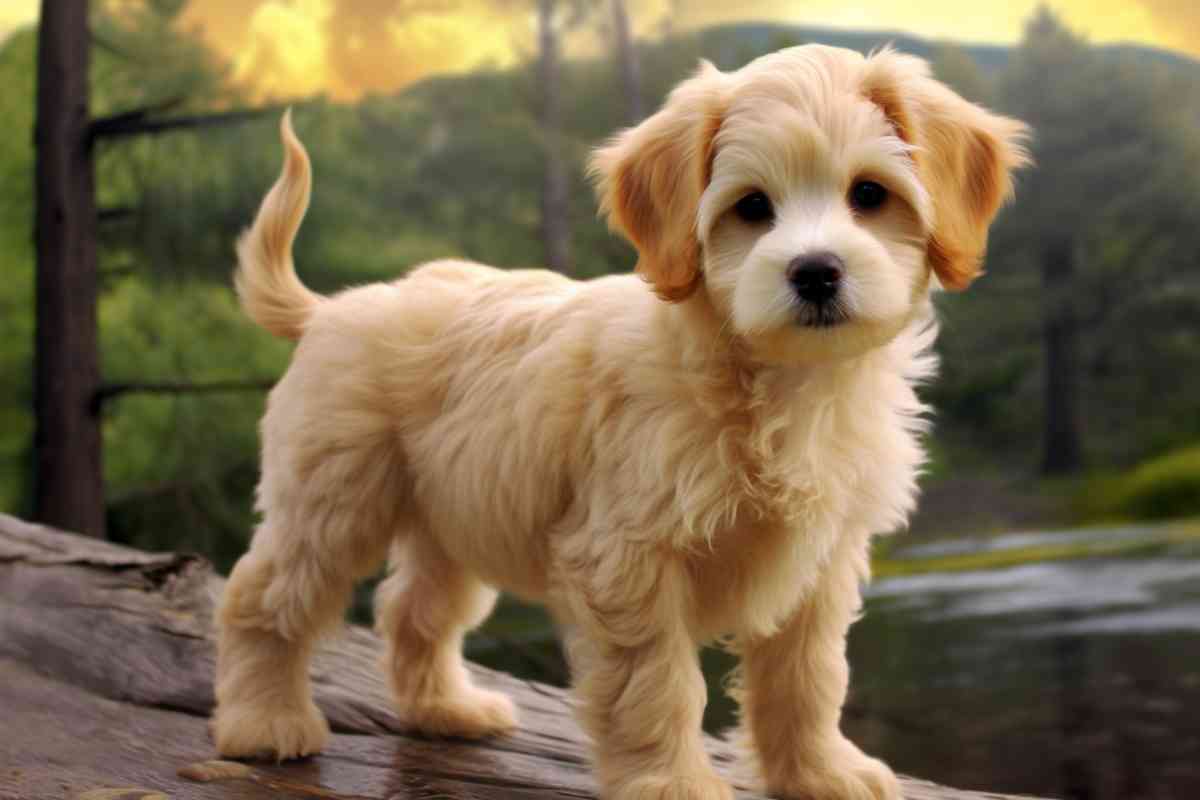
Predictability of Traits and Health Considerations
Breeding Goldendoodles to Goldendoodles, especially in the later generations, can sometimes result in less predictable traits. The further down the line you go, the more the traits can vary, introducing a rich diversity but also unpredictability in the characteristics of the offspring, including their energy levels and temperament.
However, many reputable breeders undertake this with a meticulous approach, involving extensive genetic testing to foster specific traits while minimizing potential health issues such as hip dysplasia and ear infections. This careful breeding can sometimes yield pups with very desirable traits, balancing both the appearance and temperament optimally.
Focus on Mini Goldendoodles
Mini Goldendoodles, a smaller version cherished for their adaptability to smaller spaces like apartments and condos, often become a focal point in this kind of breeding. Breeders might engage more frequently in this kind of breeding to achieve a more predictable small size, which is highly sought after.
By carefully selecting parent dogs with the desired traits, breeders can work towards nurturing Mini Goldendoodles that retain the beloved characteristics of this hybrid while ensuring a more predictable small stature.

Are Goldendoodles or Mini Goldendoodles Healthier?
Both Goldendoodles and Mini Goldendoodles, like all dog breeds and hybrids, can be susceptible to a range of health issues, some of which are inherited from their parent breeds. First-generation hybrids benefit from hybrid vigor, which makes them generally healthier, but they may still get some of these concerns. Here we list the common health problems that each of these breeds may face:
Goldendoodles:
- Hip Dysplasia
- Ear Infections
- Allergies
- Certain cancers
- Heart conditions
Mini Goldendoodles:
- Hip Dysplasia
- Ear Infections
- Allergies
- Patellar Luxation
- Body conformation irregularities
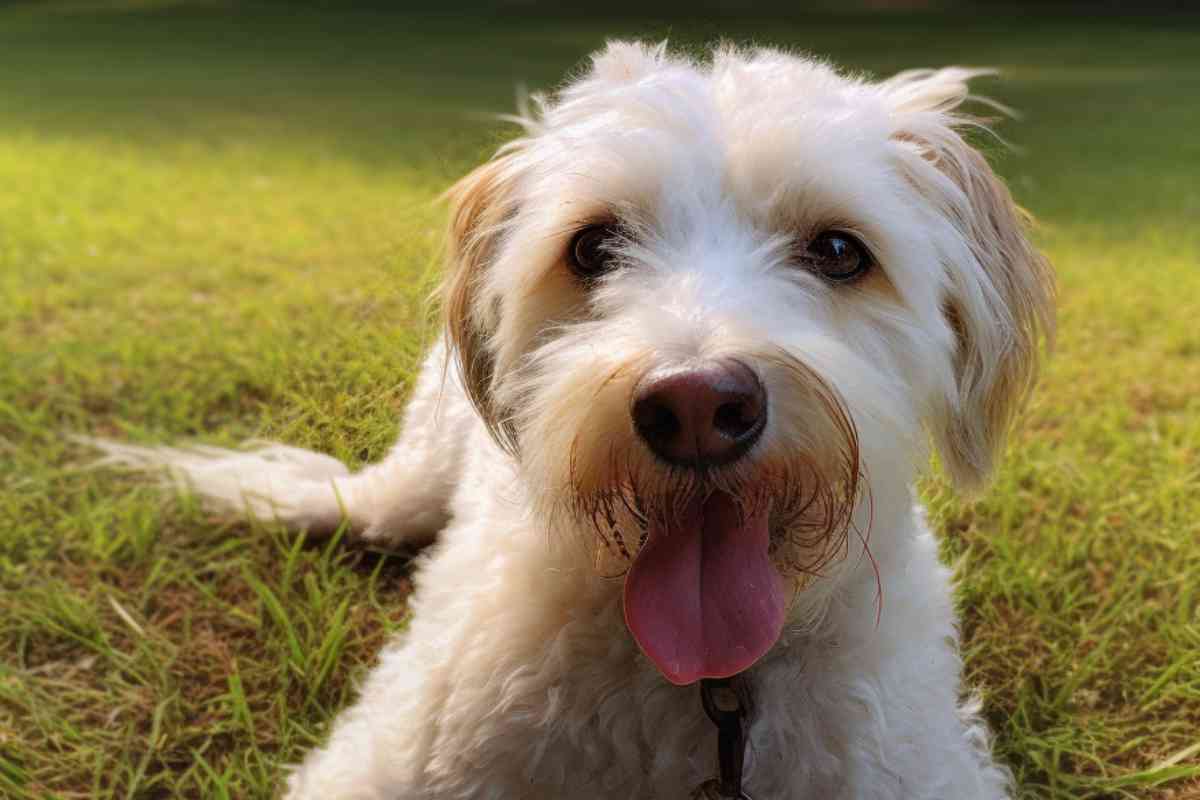
Unique Health Problems Due to Breeding
Breeding a larger dog like a Golden Retriever with a smaller one such as a Miniature or Toy Poodle can sometimes result in body conformation irregularities in Mini Goldendoodles.
These irregularities can lead to unique health problems, including issues with their physical structure, leading to discomfort and other health issues. It is essential to work with reputable breeders who undertake necessary health screenings to minimize these risks.
Lifespan and Longevity
An interesting aspect to note is that smaller dog breeds tend to have a longer lifespan compared to larger breeds. Consequently, Mini Goldendoodles generally enjoy a longer life expectancy compared to their standard counterparts.
However, it is essential to note that a well-cared-for Goldendoodle can also enjoy a long and healthy life. Regular check-ups, a balanced diet, and regular exercise can go a long way in ensuring a happy and healthy life for both Goldendoodles and Mini Goldendoodles.
Conclusion
Understanding the potential health issues and lifespan of Goldendoodles and Mini Goldendoodles can guide potential pet owners in making an informed choice. Whether you are leaning towards a Goldendoodle with its balanced energy levels or a Mini Goldendoodle adaptable to smaller spaces, being aware of their health predispositions can help in providing the best care for your furry friend.
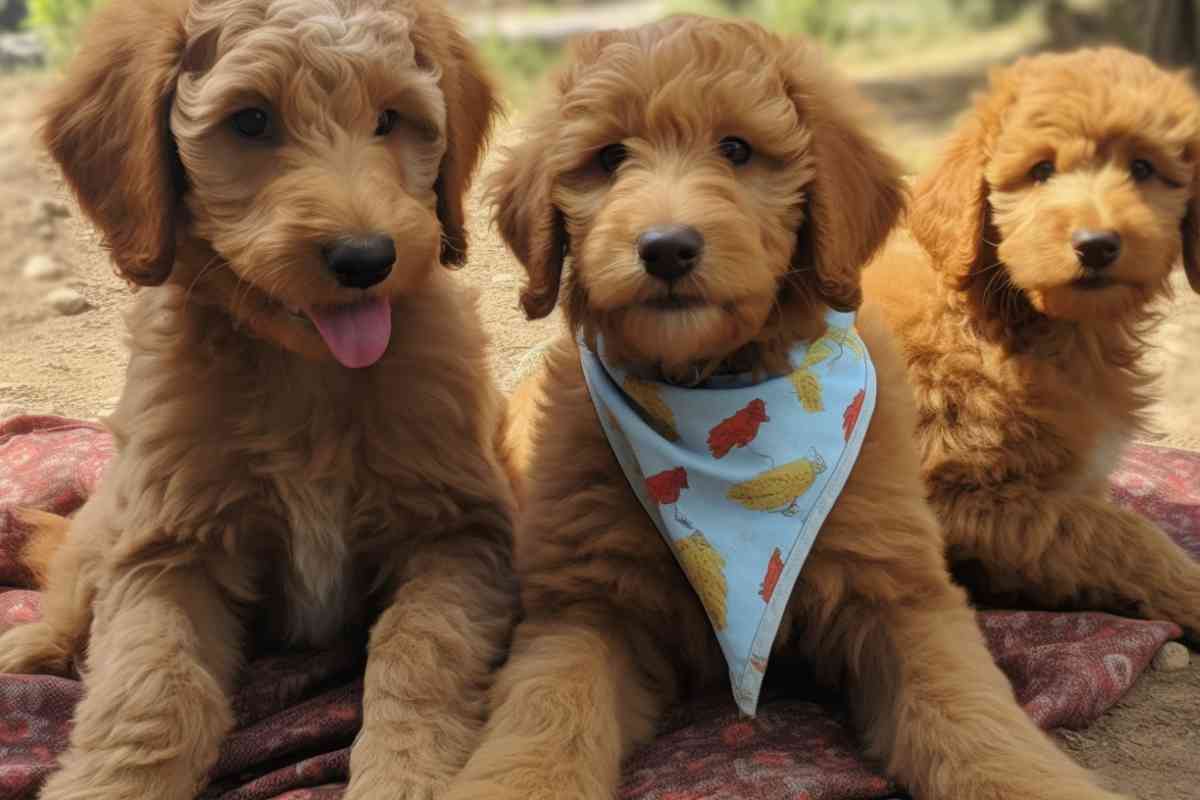
Which is More Energetic, Goldendoodles or Mini Goldendoodles?
When it comes to choosing between a Goldendoodle and a Mini Goldendoodle, understanding their energy levels can be a pivotal factor, especially if you have young kids or specific living conditions. Let’s delve into the energy dynamics of these poodle mixes to help you make an informed decision.
Inherent Energy Levels
Both Goldendoodles and Mini Goldendoodles inherit a considerable amount of energy from their parent breeds. Generally, they showcase similar energy levels, eager to play, and indulge in activities. Their floppy ears flapping as they run can be a delightful sight for any dog lover.
Goldendoodles
Goldendoodles, whether they are medium goldendoodles or of standard goldendoodle size, have a vibrant energy level that can be a great match for families with young kids. Their playful bark and the joy they exhibit during playtime can be a therapy in itself, bringing happiness and reducing anxieties.
Mini Goldendoodles
When we focus on the mini goldendoodle size, including variations like teacup goldendoodles and toy goldendoodles, they might come off as slightly less energetic compared to their larger counterparts. Their smaller stature allows them to entertain themselves indoors more easily, making them adaptable to various living environments.

Managing Energy Levels
Regardless of their size, it is essential to manage their energy levels effectively to prevent issues such as separation anxiety. Engaging them in activities and ensuring they have enough playtime can be vital.
Indoor Activities
Thanks to their smaller size, mini goldendoodle puppies can easily entertain themselves indoors. A game of fetch in a moderate space can keep them happy, and their delightful bark can fill your home with joy.
The Things the Miniature Goldendoodle and Standard Goldendoodle have in Common: Grooming, Training, and Socialization
When you decide to bring a Goldendoodle or a Mini Goldendoodle into your home, it is essential to understand that while they share similar needs in terms of grooming, training, and socialization, the extent of effort required can vary based on their size. Let’s delve deeper into these aspects to help you prepare for a happy and healthy companionship.
Grooming Needs
Both Goldendoodles and Mini Goldendoodles have a low-shedding coat that requires regular grooming to prevent issues such as matting and to maintain the health of their fur.
However, the grooming needs can be slightly more demanding for the larger Goldendoodles due to their bigger size and, consequently, more fur to care for. Regular brushing with appropriate brushes is essential to keep their coat healthy and shiny.

Training Requirements
Training is a crucial aspect of raising a well-behaved dog. Both Goldendoodles and Mini Goldendoodles are intelligent and eager to please, which makes them relatively easy to train.
However, training a larger Goldendoodle might require a bit more patience and effort, given their higher energy levels and stronger physical strength. It is advisable to start training early, focusing on basic commands and socialization to nurture a well-behaved companion.
Socialization Needs
Socialization is vital for both Goldendoodles and Mini Goldendoodles to ensure they grow up to be friendly and well-adjusted adults. Introducing them to different people, environments, and experiences is essential.
Given their larger size, Goldendoodles might require more extensive socialization training to ensure they are comfortable and well-behaved in various settings, including parks where they are likely to encounter other dogs and people.
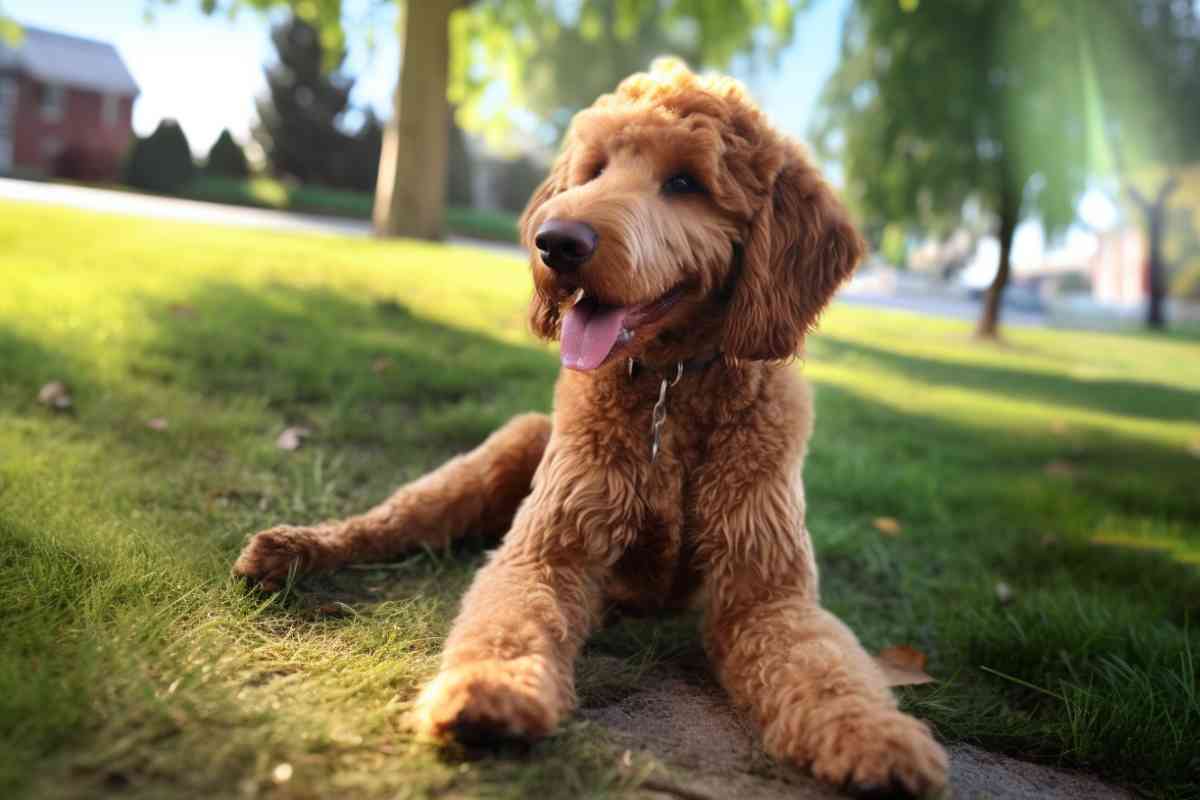
Frequently Asked Questions
What’s the difference between a mini Goldendoodle and a Goldendoodle?
A mini Goldendoodle is a crossbreed between a Golden Retriever and a miniature Poodle. They are smaller in size, weighing between 15 to 35 pounds and standing around 13 to 20 inches tall. On the other hand, a Goldendoodle is a crossbreed between a Golden Retriever and a standard Poodle. They are larger in size, weighing between 50 to 90 pounds and standing around 20 to 24 inches tall.
Are mini Goldendoodles better than Goldendoodles?
Neither breed is inherently better than the other. It ultimately depends on your lifestyle and preferences. Mini Goldendoodles are a good choice for those who live in smaller spaces or prefer a smaller dog. Goldendoodles are a good choice for those who want a larger dog with more energy.
What are the cons of a mini Goldendoodle?
One potential downside of a mini Goldendoodle is that they may be more prone to health issues due to their smaller size. They may also require more grooming due to their curly coat.
Can you breed a Mini Goldendoodle with a Standard Goldendoodle?
Yes, it is possible to breed a Mini Goldendoodle with a Standard Goldendoodle. However, the resulting puppies may have a wide range of sizes and temperaments.
How big will mini Goldendoodle get?
Mini Goldendoodles typically weigh between 15 to 35 pounds and stand around 13 to 20 inches tall.
Where can I find medium size Goldendoodle for sale?
There are many reputable breeders that specialize in Goldendoodles. You can also check local animal shelters or rescue organizations for adoptable Goldendoodles. It is important to do your research and choose a breeder or organization that prioritizes the health and well-being of their dogs.
| Mini Goldendoodle | Goldendoodle |
|---|---|
| Smaller size | Larger size |
| Weighs 15-35 lbs | Weighs 50-90 lbs |
| Stands 13-20 inches tall | Stands 20-24 inches tall |
| More prone to health issues | More energy |
| May require more grooming |